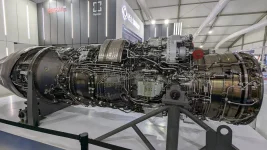- Views: 1K
- Replies: 13

In a move that could significantly advance India's submarine capabilities, Spanish shipyard Navantia has offered a complete Transfer of Technology (ToT) for its cutting-edge Air-Independent Propulsion (AIP) system, known as Bio-Ethanol Stealth Technology (BEST).
This unprecedented offer positions Navantia as a strong contender in India's strategic submarine programs, including the ambitious Project-75 (I) and future initiatives like Project-76.
The BEST system represents a major leap in submarine propulsion technology. It allows submarines to recharge their batteries while submerged, eliminating the need for periodic snorkelling, a manoeuvre that exposes the vessel to detection.
This innovative system utilizes a bioethanol reforming process, using a renewable fuel derived from organic feedstock, to produce hydrogen on demand. This hydrogen is then combined with pure oxygen in a fuel cell to generate electrical power silently and with minimal emissions.
Unlike many existing AIP systems, Navantia's BEST technology eliminates the need to store hydrogen onboard, a significant advantage in terms of both safety and operational flexibility. By producing hydrogen on demand, the system mitigates the risks associated with storing large quantities of compressed gas within the confined space of a submarine. This enhances the submarine's strategic autonomy, deterrence potential, and crew safety.
Navantia claims its BEST system is a third-generation AIP solution, a generation ahead of the Fuel-Cell-based AIP system developed by India's DRDO. This technological edge, according to Navantia, translates to superior stealth, endurance, and operational simplicity. The system's extensive sensorization reduces the manpower required for operation while enhancing safety and efficiency.
Crucially, Navantia's offer includes complete ToT for the BEST system, extending beyond Project-75 (I) to encompass future submarine programs like Project-76, under which India plans to develop 12 advanced conventional submarines.
This ToT would empower Indian shipyards and research organizations to domestically manufacture and further develop this advanced AIP technology. If accepted, Navantia's proposal could significantly enhance India's submarine capabilities and contribute to its goal of achieving self-reliance in critical defence technologies. The BEST system offers a compelling combination of stealth, endurance, and safety, making it a potentially game-changing technology for India's underwater fleet.




